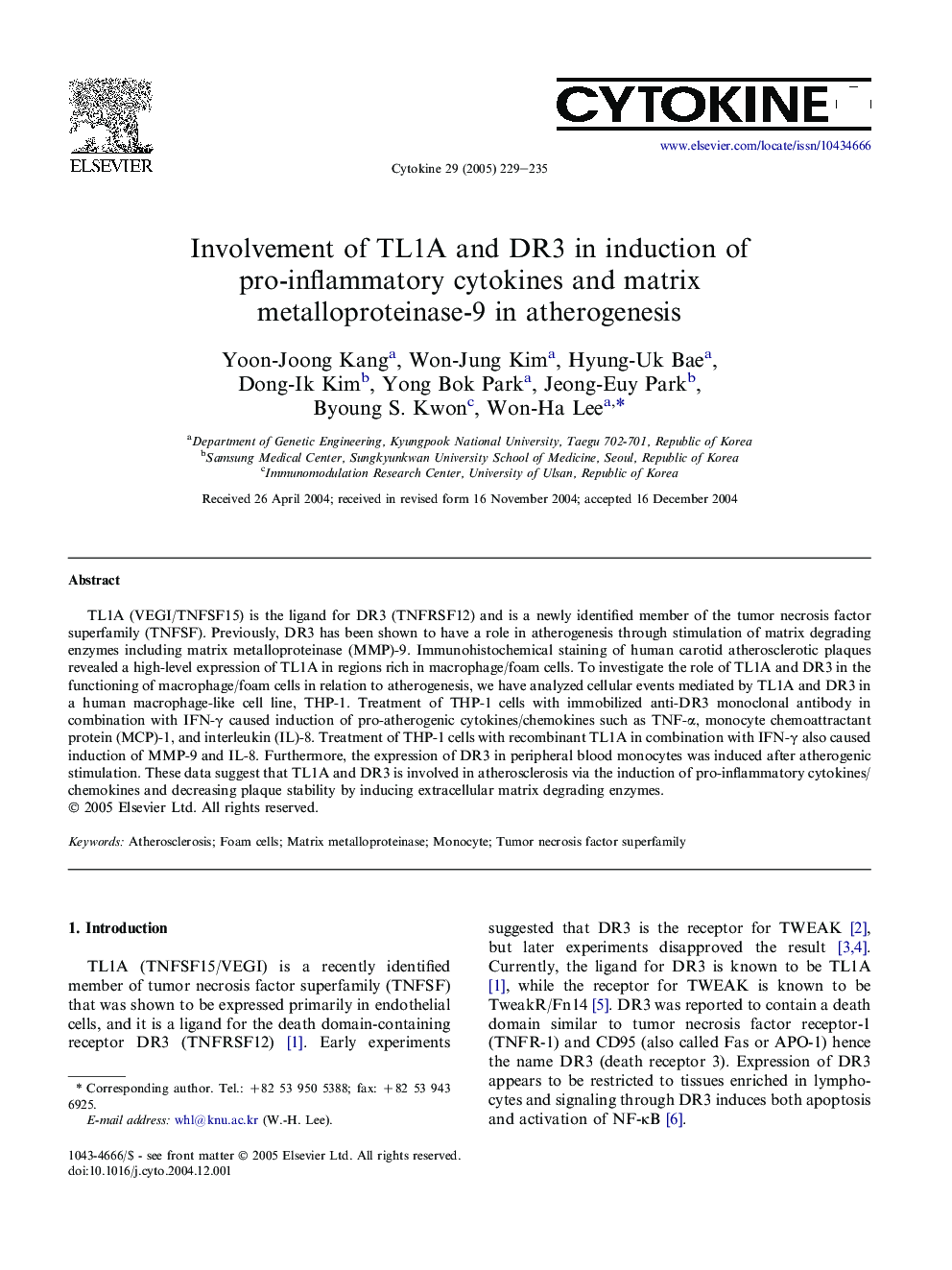| Article ID | Journal | Published Year | Pages | File Type |
|---|---|---|---|---|
| 9110962 | Cytokine | 2005 | 7 Pages |
Abstract
TL1A (VEGI/TNFSF15) is the ligand for DR3 (TNFRSF12) and is a newly identified member of the tumor necrosis factor superfamily (TNFSF). Previously, DR3 has been shown to have a role in atherogenesis through stimulation of matrix degrading enzymes including matrix metalloproteinase (MMP)-9. Immunohistochemical staining of human carotid atherosclerotic plaques revealed a high-level expression of TL1A in regions rich in macrophage/foam cells. To investigate the role of TL1A and DR3 in the functioning of macrophage/foam cells in relation to atherogenesis, we have analyzed cellular events mediated by TL1A and DR3 in a human macrophage-like cell line, THP-1. Treatment of THP-1 cells with immobilized anti-DR3 monoclonal antibody in combination with IFN-γ caused induction of pro-atherogenic cytokines/chemokines such as TNF-α, monocyte chemoattractant protein (MCP)-1, and interleukin (IL)-8. Treatment of THP-1 cells with recombinant TL1A in combination with IFN-γ also caused induction of MMP-9 and IL-8. Furthermore, the expression of DR3 in peripheral blood monocytes was induced after atherogenic stimulation. These data suggest that TL1A and DR3 is involved in atherosclerosis via the induction of pro-inflammatory cytokines/chemokines and decreasing plaque stability by inducing extracellular matrix degrading enzymes.
Related Topics
Life Sciences
Biochemistry, Genetics and Molecular Biology
Endocrinology
Authors
Yoon-Joong Kang, Won-Jung Kim, Hyung-Uk Bae, Dong-Ik Kim, Yong Bok Park, Jeong-Euy Park, Byoung S. Kwon, Won-Ha Lee,
